Greece, the cradle of democracy, is a country of many faces, from the bustling sprawl of major urban centers such as the capital, Athens, and the second city of Thessaloniki to picturesque islands that seem more like movie locations. You’ll visit sleepy villages apparently untouched by time, and ancient sites that detail the country’s essential role in the progress of humanity.
With so much to see and do on a visit to the country that has culturally offered so much to the world, planning a trip can be an overwhelming affair. Greece is a big country, too, from the rugged coast of the mountainous mainland to the several thousand islands, 227 of which are inhabited, scattered across the sparkling Aegean.
Here’s the ultimate seven-day Greece itinerary that will allow you to see the very best this fascinating country has to offer.
Day 1: Athens
Morning
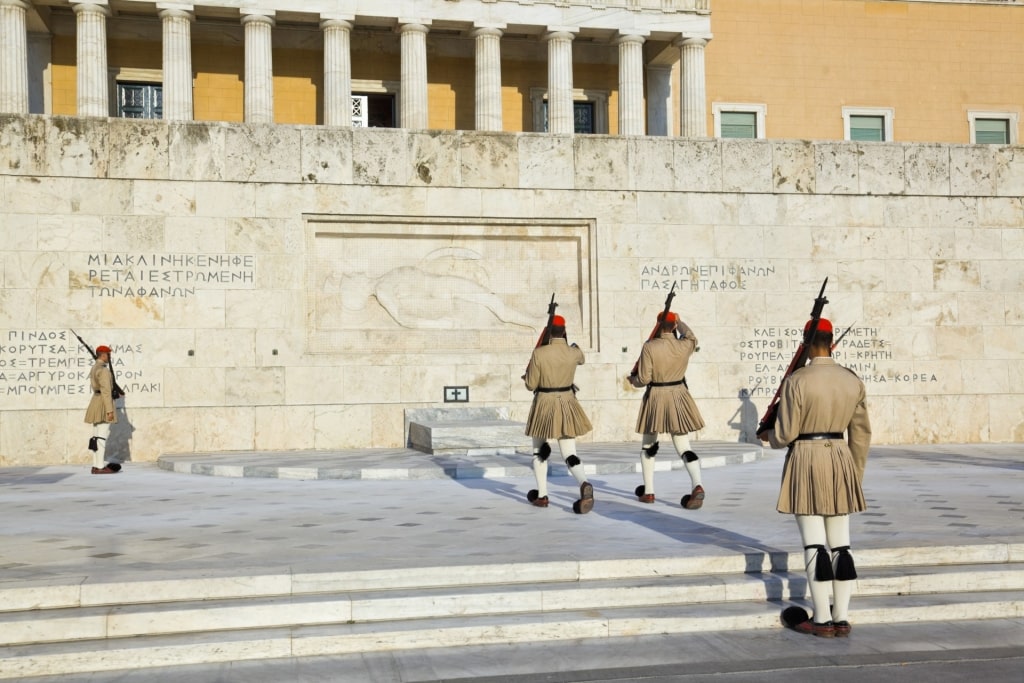
Changing of the Presidential Guard at the Tomb of the Unknown Soldier, Athens
Surrounded by a series of mountain ranges, modern Athens sprawls for miles, but the historic center is compact and perfect for exploring in a single day.
Start by seeing the Changing of the Presidential Guard at the Tomb of the Unknown Soldier outside the Houses of Parliament on Syntagma Square in one of the best neighborhoods in Athens. The high-kicking march of the Evzones in their traditional costume complete with pom-pommed slippers provides a great photo opportunity.
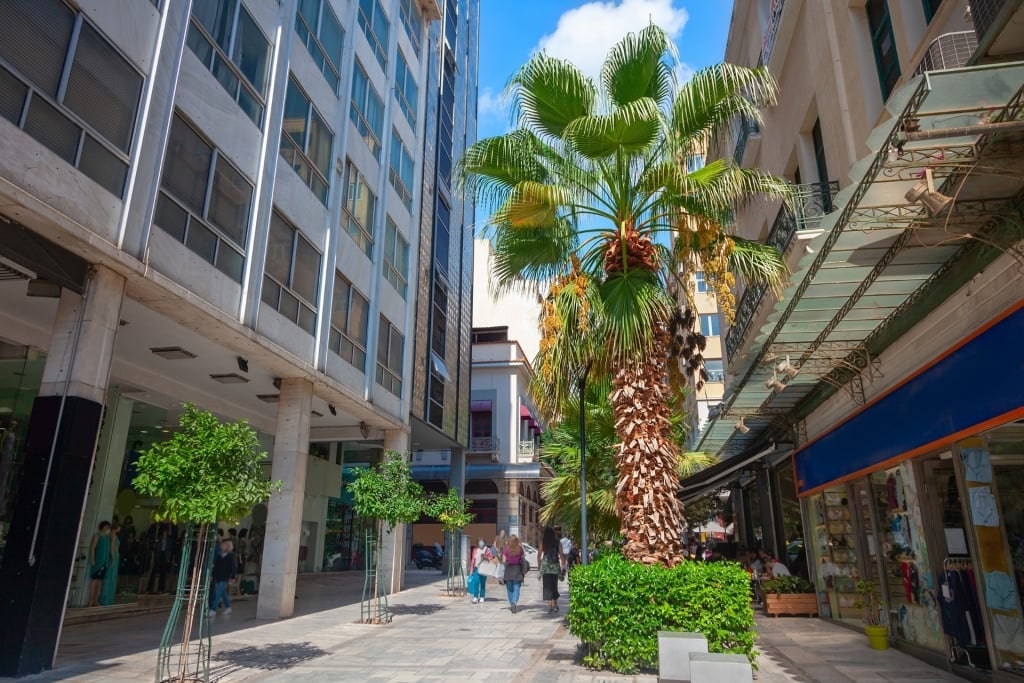
Ermou Street, Athens
Walk west down high-end Ermou Street from Syntagma Square. It’s ideal for people-watching and is home to the best shopping in Athens. There are a number of coffee shops here if you wish to stop off for strong, molasses-like Greek coffee or a cooling iced frappé and take in well-heeled Athenian life.
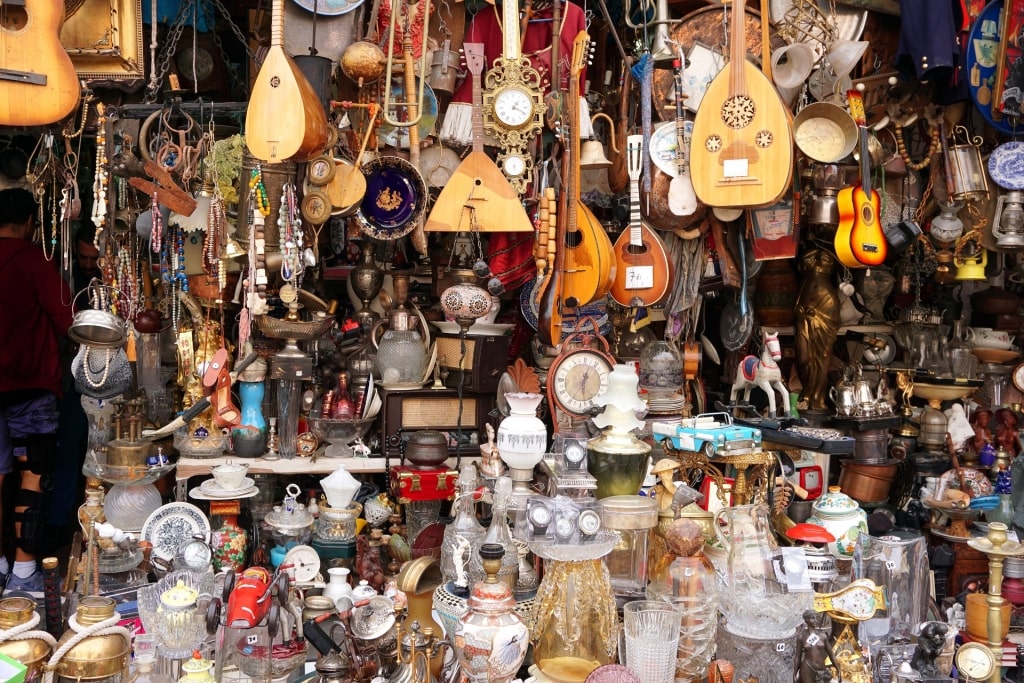
Athens Flea Market, Athens
From here, Ermou Street leads to Monastiraki Square, home to Athens Flea Market which is great for exploring and picking up Greek souvenirs and trinkets. Sample a souvlaki—the quintessential Greek street food, a little like a larger version of a soft-shell taco—on your walk. There are a number of stands here.
Afternoon
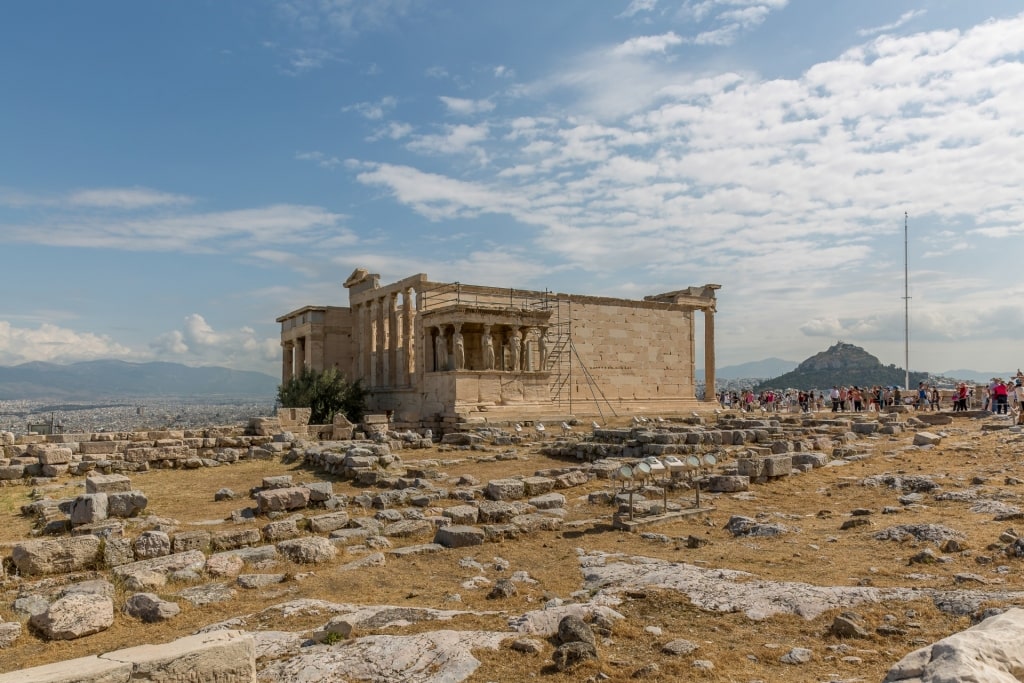
Acropolis, Athens
Having browsed the market, jump in a cab from Monastiraki and head to the base of wooded Acropolis hill, the city’s most famed location.
Spend the afternoon marveling at the ruins of this Greek landmark and uninterrupted views of the metropolis, before visiting the fabulously modern Acropolis Museum in its foothills.
It’s here that you can piece together the history of the city; all the artifacts in the museum’s elegant displays have been recovered from the Acropolis site.
The terrace café here offers great views over the city, too, and is a fabulous spot for a late lunch or early dinner as the shadows start to lengthen.
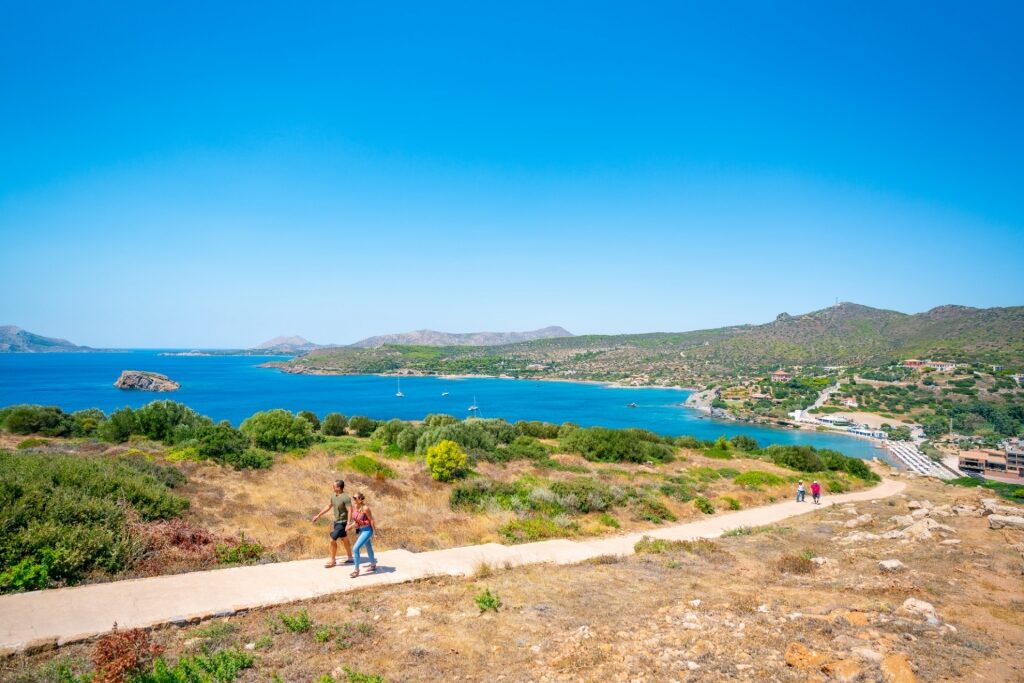
Cape Sounion, near Athens
Alternatively, take a taxi on a half day trip from Athens down to Cape Sounion, the very southern tip of the Athenian peninsula. As you leave the city and its swish coastal suburbs of Glyfada, Voula and Vouliagmeni behind, the road opens up to magnificent vistas of the Saronic Gulf as it passes through a succession of small seaside resorts.
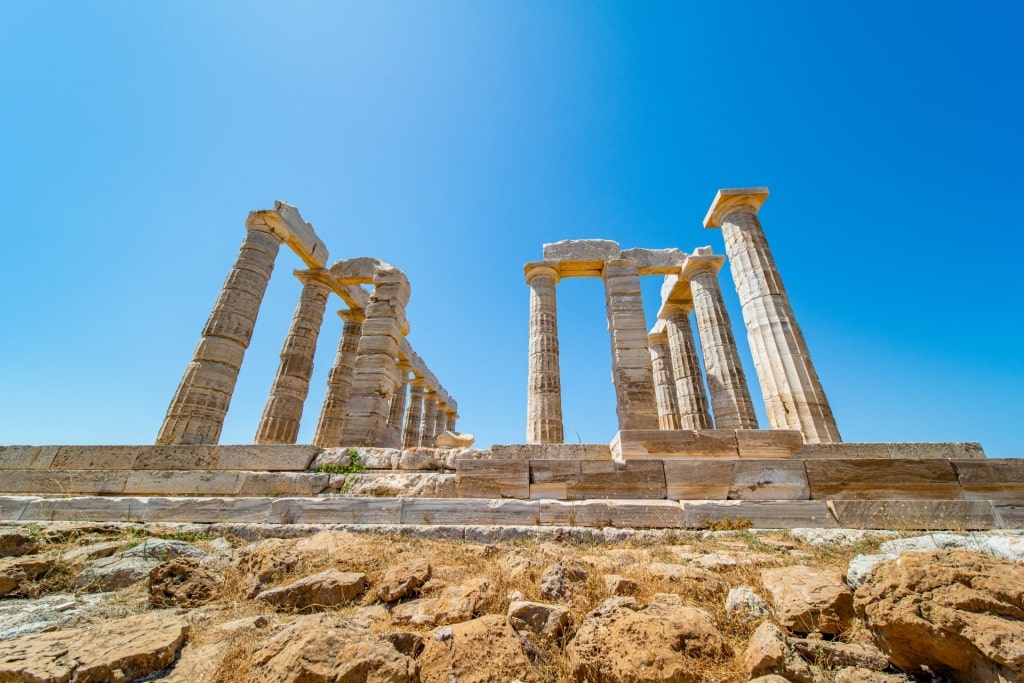
Temple of Poseidon, near Athens
The Cape is home to the ancient Temple of Poseidon that sits high on the cliffs overlooking the Aegean. This in turn plays host to one of Greece’s most enduring legends, the culmination of Theseus’ successful attempt to slay the Cretan Minotaur to which Athens was beholden in the great legend.
Mission accomplished, Theseus returned to Athens by ship, forgetting to change the color of his sails from black (to signify a loss) to the white of victory. On seeing this, his father, King Aegeus, overcome by grief, hurled himself from the cliffs, in the process giving his name to the sea and creating another spot that vies for the title of Greece’s greatest sunset.
Read: Three Days in Athens
Day 2: Thessaloniki
Morning
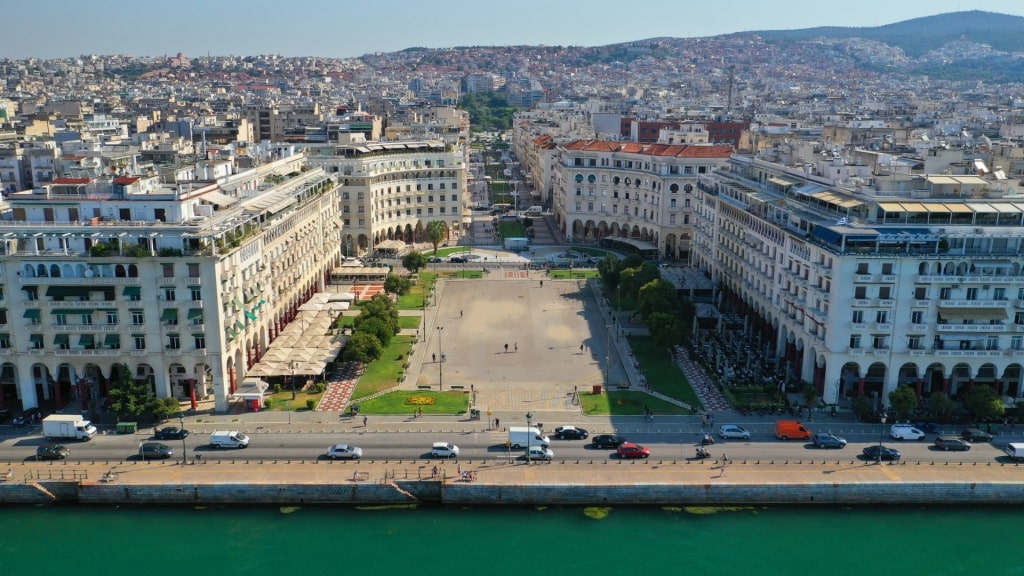
Aristotelous Square, Thessaloniki
Greece’s second city, Thessaloniki, is a food-lover’s delight. A great way to build up an appetite is a long walk along the port overlooking the Thermaic Gulf.
Along the way, stop to admire elegant Aristotelous Square, part of the urban planning project undertaken by French architect Ernest Hébrard after much of the Greek city was destroyed by fire in 1917.
There’s a host of cafés on the square for the Greek ritual of proinos kafes, or morning coffee. The port is also home to the city’s iconic White Tower, a Byzantine fortification that is now a museum.
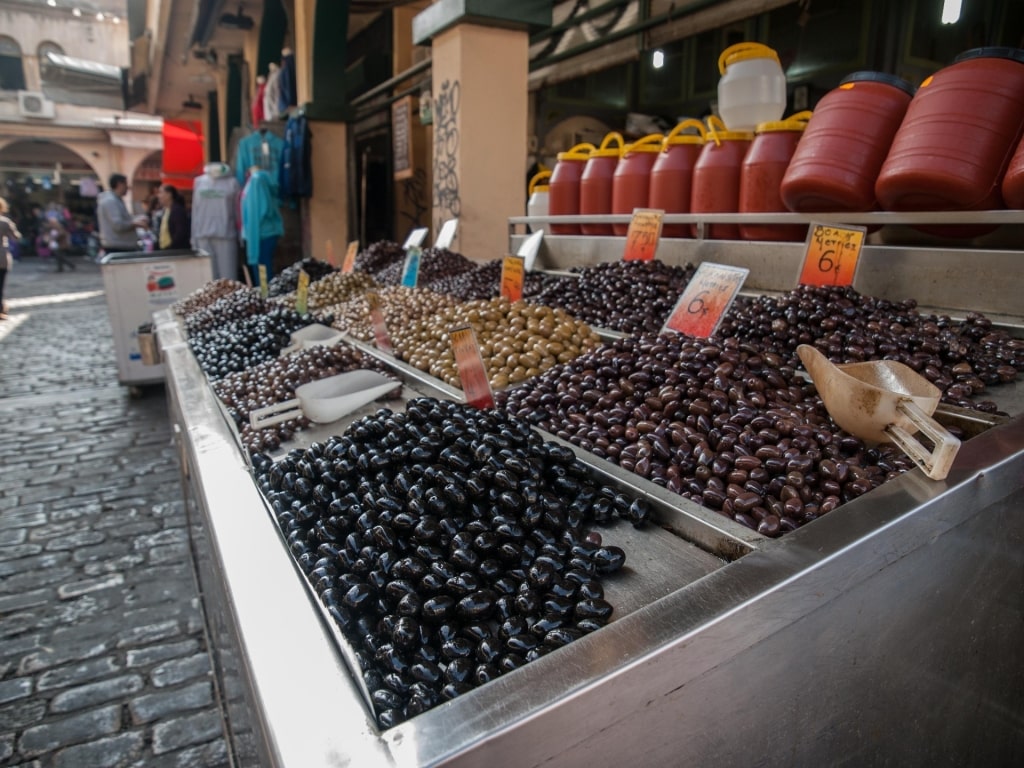
Food market in Thessaloniki
Thessaloniki’s food market, a series of enclosed arcades and open streets, is a real joy. You can buy everything here from homeware to the most exotic spices. The added bonus is that the restaurants in its surrounds are mainly owned by traders or supplied by them, so the ingredients are the freshest in town.

Bougatsa
Northern Greece’s classic sweet is bougatsa, a type of custard pastry that is almost ubiquitous in the cafés and bakeries of the city.
For a different take on it, head to Estrella, a modern coffee shop/brunch venue, that became world-famous when it developed the Greek version of the “cronut”, bougatssant, a tempting hybrid of Greek bougatsa and a French croissant.
Afternoon
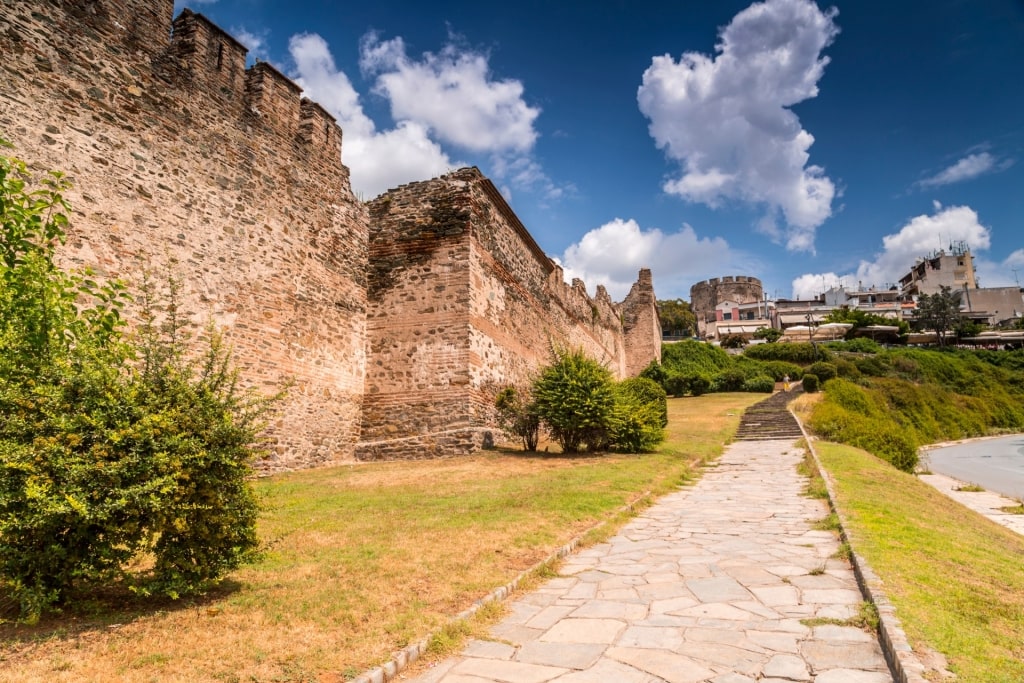
Ano Poli, Thessaloniki
Hail a cab and head to Ano Poli—the “upper town”. High on a hill over the port and surrounded by ancient city walls, it’s a fabulous maze of winding streets lined with historic houses, monuments, and some of the city’s best traditional tavernas, all with outdoor terraces.
Read: Best Beaches in & Around Thessaloniki
Day 3: Mykonos
Morning
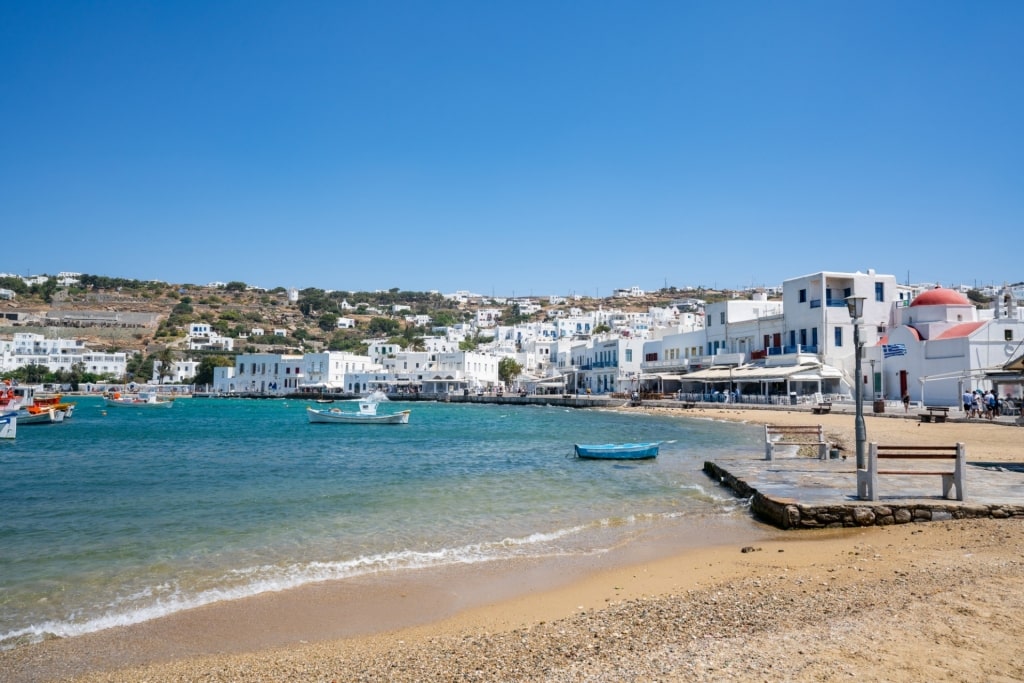
Chora, Mykonos
A morning stroll is an ideal way to drink in the atmosphere of Greece’s most sophisticated vacation spot. Chora, the port town, spreads back from the waterfront in a labyrinth of side streets, making a walk along the harbor an ideal way to get your bearings.
If you’re lucky, you may bump into one of the island’s resident pelican mascots as they wander in and out of the kitchens of the tavernas, looking for treats.
The birds are a long-standing tradition that goes back to the 1950s when Mykonos was a favored holiday location of Europe’s Bohemian elite. Make sure to take snaps of the island’s equally famous windmills that sit by the port.
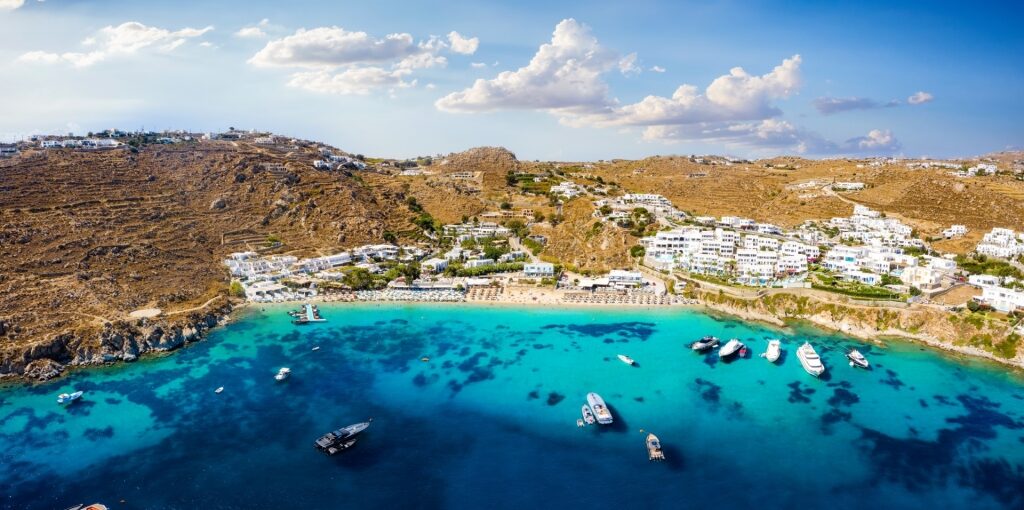
Psarou Beach, Mykonos
Take a water taxi to Psarou, the most high-end of a stretch of Mykonos beaches that spread out from Chora in a series of coves. This vibrant spot offers some of the island’s best people-watching and is also home to Nammos, one of the coolest beach bars, with sun loungers, table service, DJs, and a plethora of Mykonos’s most glamorous visitors.
Late Afternoon
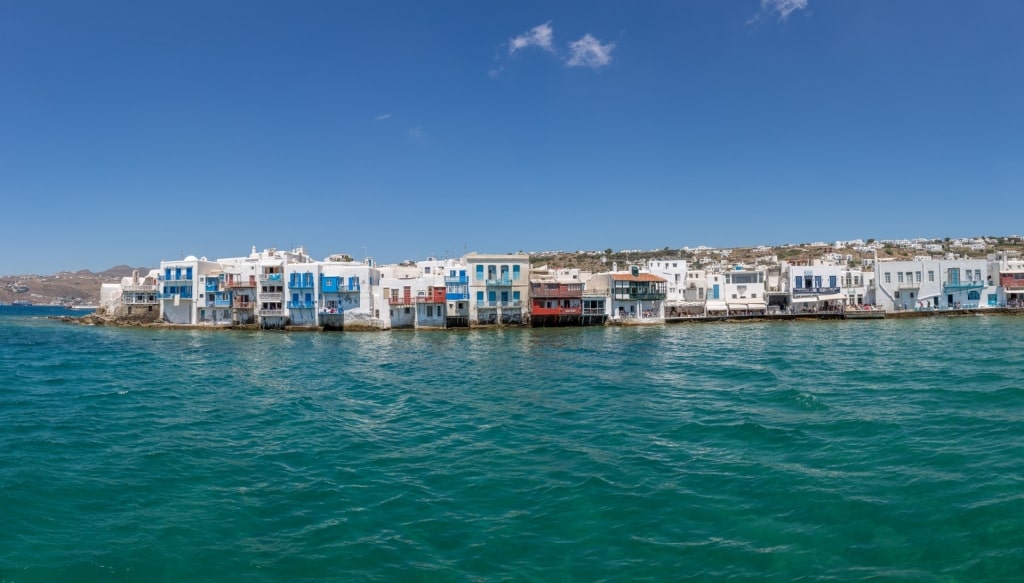
Little Venice, Mykonos
Head back to town for late afternoon in another Mykonos icon: Little Venice, a series of gorgeous old houses that hang precariously over the water. The district is home to hip bars playing ambient music, and some lovely fish restaurants, perfect for an evening meal as the sun sets across the water.
Read: Best Greek Islands for Beaches
Day 4: Rhodes
Morning
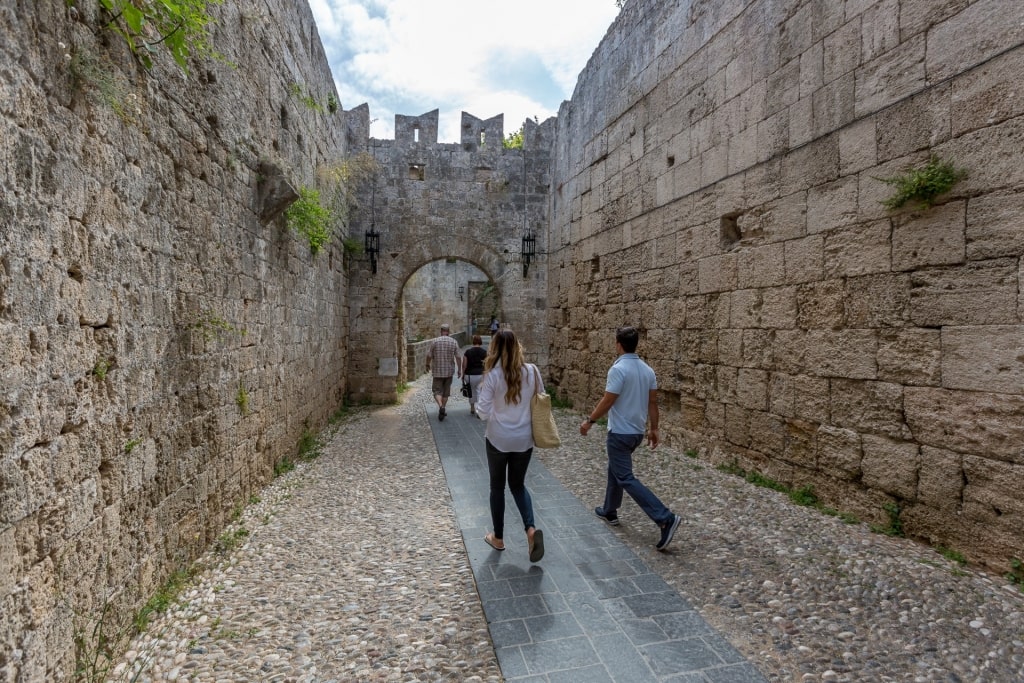
Rhodes Old Town
Rhodes Old Town is probably the best-preserved site in Europe that’s linked to the Crusades. Between 1309 and 1522, Rhodes came under the protection of the Knights of St. John.
Housed within the town’s medieval walls is a series of winding cobbled streets, lined with elegant mansions and creating a labyrinth that is begging to be explored.
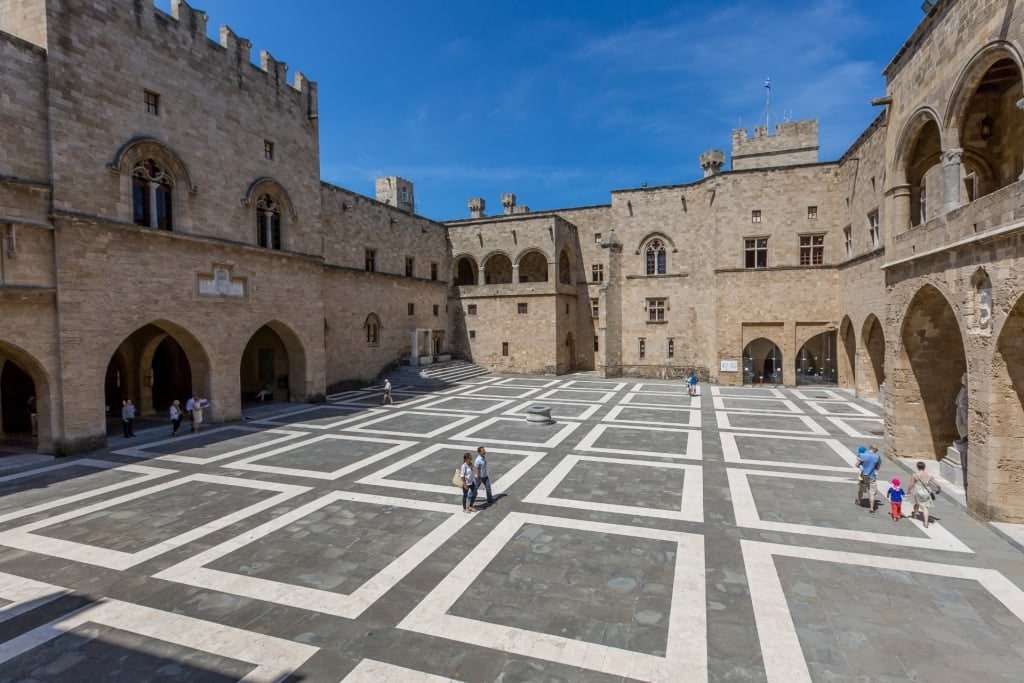
Palace of the Grand Master of the Knights, Rhodes
At the heart of the finery lies the Palace of the Grand Master of the Knights, also known as the Kastello, a magnificent piece of Gothic architecture, one of the few remaining in Greece.
Afternoon
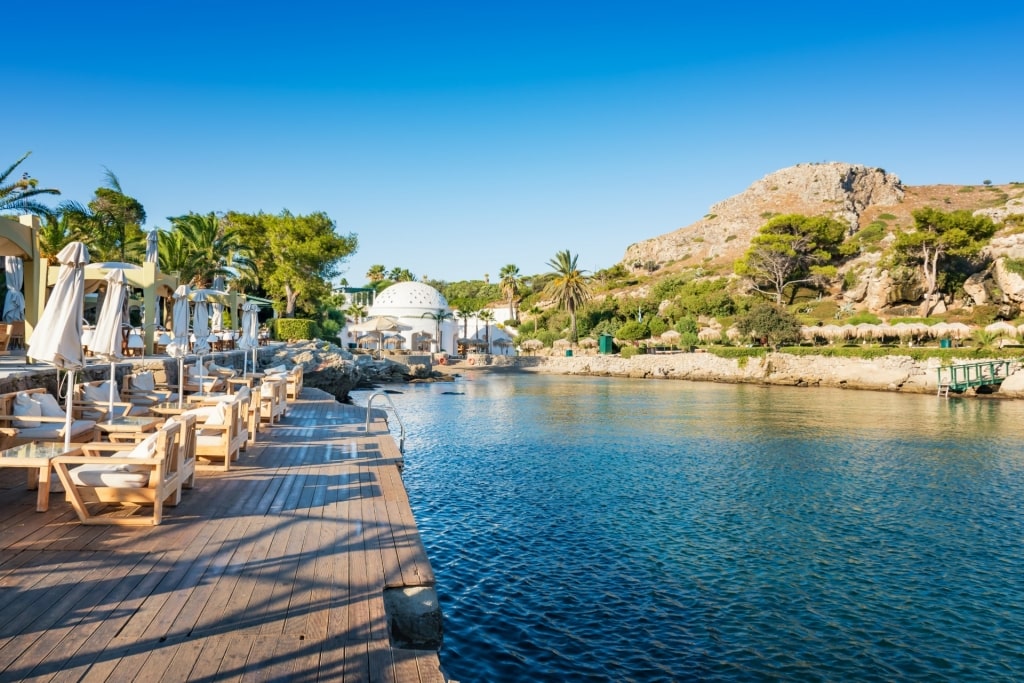
Kalithea Springs, Rhodes
There’s plenty to do for the remainder of your day in Rhodes. At Kalithea Springs, the waters have for centuries been known for their curative properties, but it was only in the 1930s that the elegant current complex was born.
Recently restored to its former glory, the site is home to intricate mosaics, thermal pools and a lovely private beach surrounded by lush gardens.
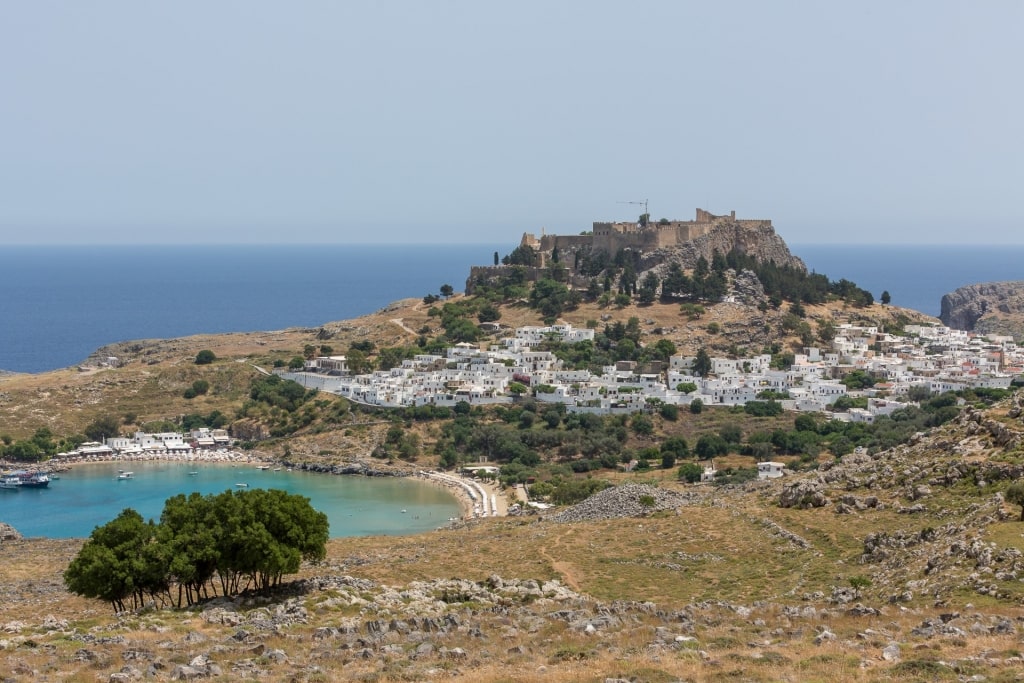
Lindos, Rhodes
If being pampered by thermal pools is not for you, the island of Rhodes has its own Acropolis, sitting atop a hill at Lindos and dating from the fourth century BC.
It’s a relatively steep climb to the summit and not for the faint of heart, but you’ll be rewarded with incredible views out to sea; it’s one of the best hikes in Greece for this reason. There’s also an ancient theater, cemeteries, a temple and a stoa—a splendid covered walkway at the site.
Day 5: Santorini
Morning
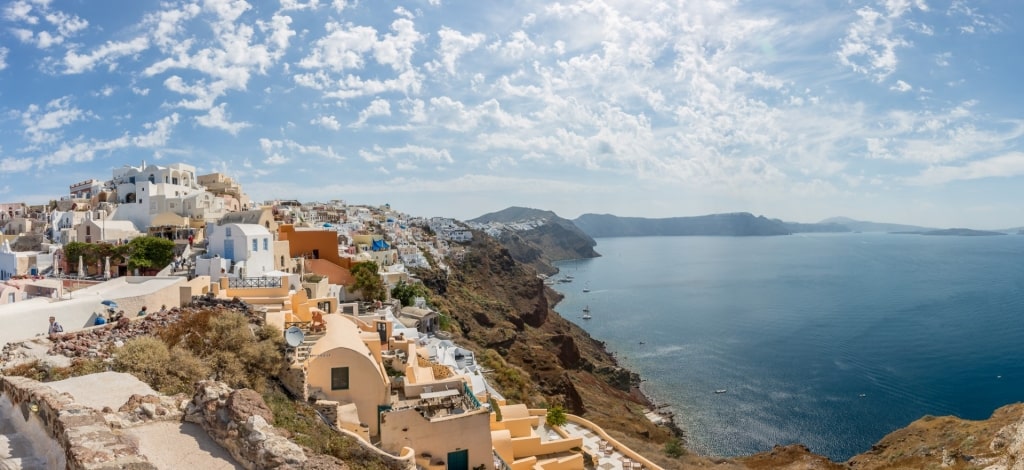
Oia, Santorini
Scattered across the caldera of a volcano that is still active, Santorini and the rugged and largely uninhabited Thirasia form a semicircle of sheer, red-and-black cliffs around a sapphire-blue sea with two smoking islands, Nea Kameni and Palaia Kameni, at its heart.
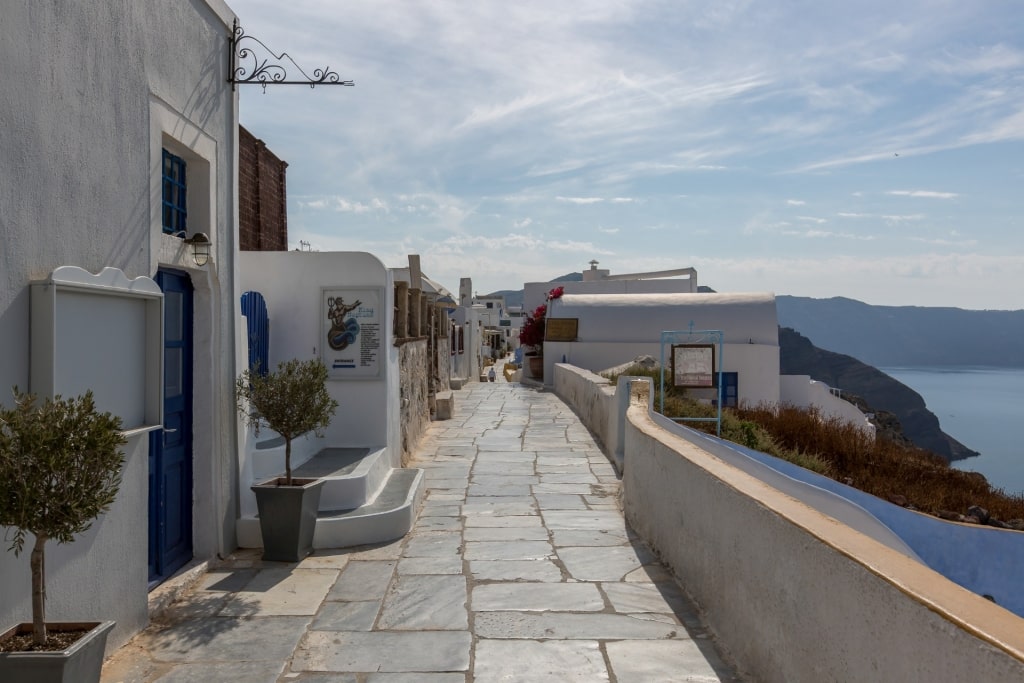
Oia, Santorini
Rising from the waters and seemingly clinging to its steep cliffs are a succession of small villages and settlements made up of sugar-cube white houses and churches topped with the island’s iconic blue domes.
The main villages to look out for are Fira (the capital), Imerovigli, and Oia, one of the most romantic spots on the Greek islands.
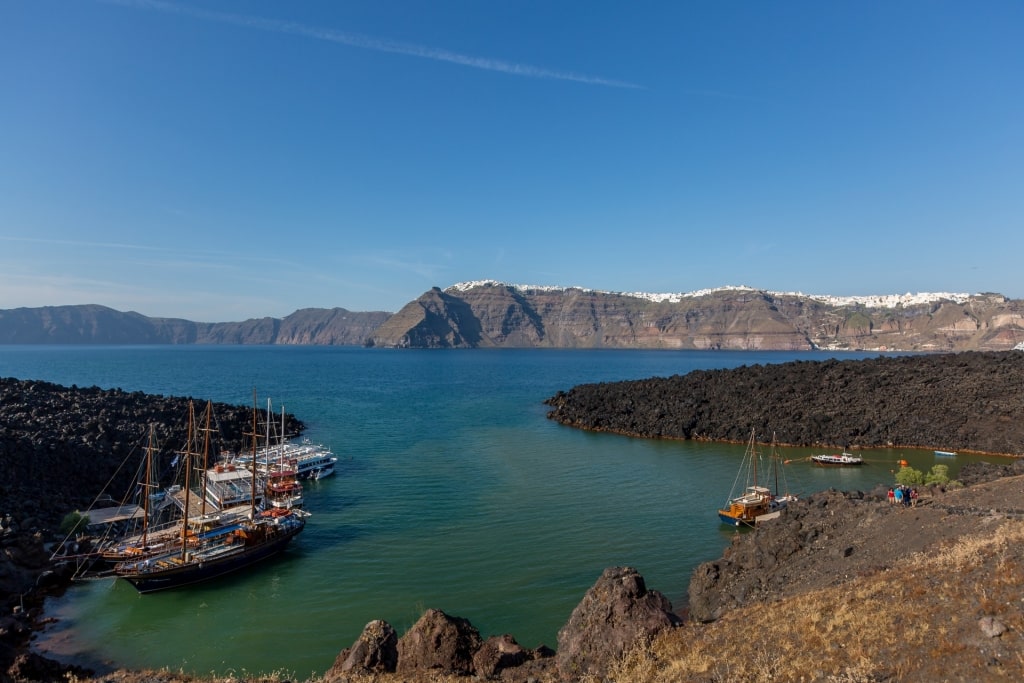
Nea Kameni
Start the day while it’s still relatively cool with a trip to Nea Kameni, one of the two lava islands in the bay that separates Thirassia from Santorini and was formed a little more than 400 years ago.
You can explore its rugged, moon-like lava surface where steam still escapes in wisps from the heat below and then take a dip in warmed therapeutic waters, one of the best hot springs in the world, enriched with iron and manganese.
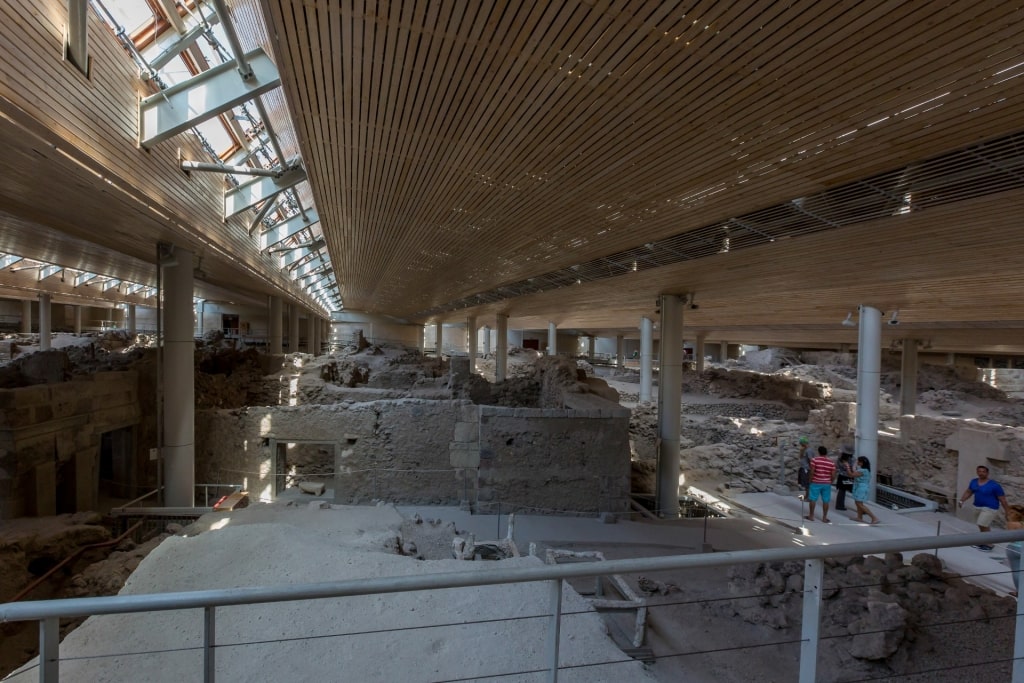
Akrotiri, Santorini
Back on the mainland, either explore the winding backstreets of the capital, Fira, laden with jewelers selling the finest gold, or head to Akrotiri, Santorini’s version of Italy’s Pompeii.
These Greek ruins are thought by many among the local population to have given rise to the legend of Atlantis, once a thriving metropolis

Akrotiri, Santorini
A great volcanic eruption brought an end to this thriving city in the 17th century BC when it was covered in thick ash. The density of the ash cloud means the ruins are almost perfectly preserved.
The site is cleverly arranged via a series of suspended walkways that look down on the remnants of the city. The dig is ongoing, as archaeologists continue to discover more of Akrotiri’s secrets.
Early Evening
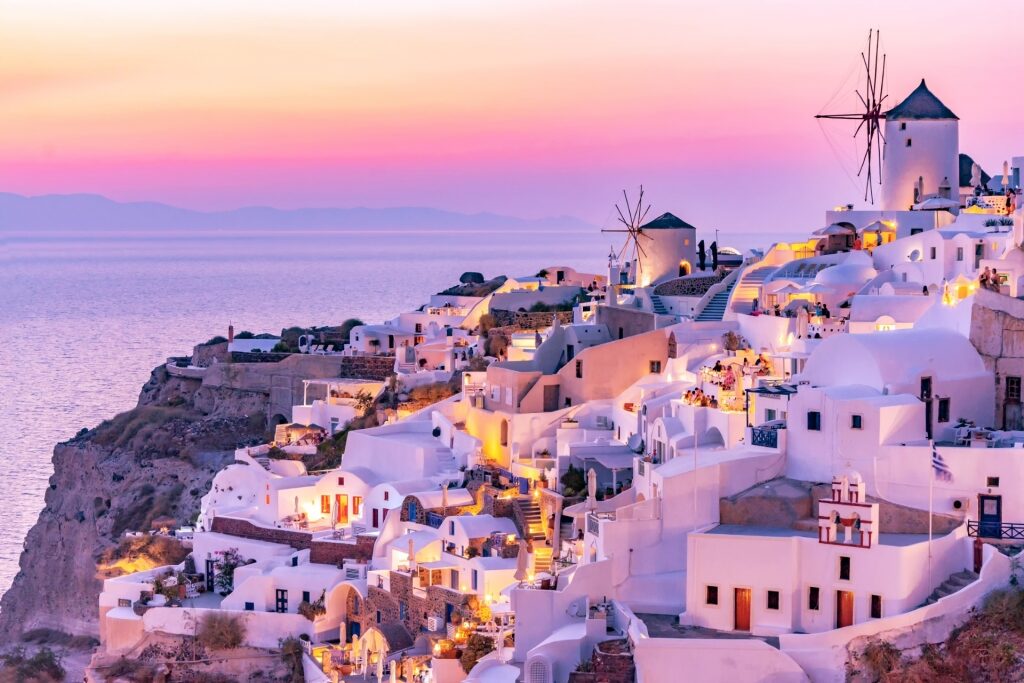
Oia, Santorini
Head to the settlement of Oia on the northern tip of the island, claimed to be home to the world’s most magnificent sunsets.
It pays to arrive early and take up a spot in one of the many cafés or bars that look out to sea to get prime viewing later in the evening as the sun’s fireball streaks the skies with deep shades of red, crimson, and burnt orange.
Day 6: Hydra
Morning
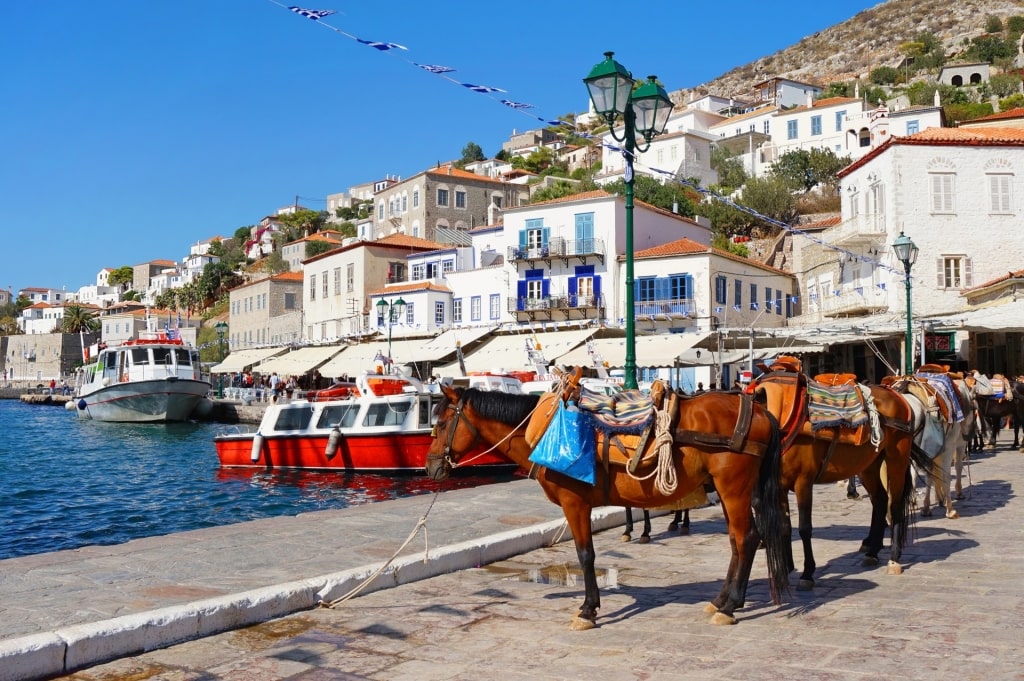
Hydra
Car-free Hydra is picture postcard in its prettiness. A small, horseshoe-shaped port curves around a bay, the narrow streets climbing up the hill behind lined with elegant mansions that were the homes of sea captains in the 19th century.
That era gave way to several heroes of the early 1820s Greek Revolution and you can find out more about their exploits at the Lazaros Kountouriotis Historical Mansion and the nearby Historical Archives Museum of Hydra.
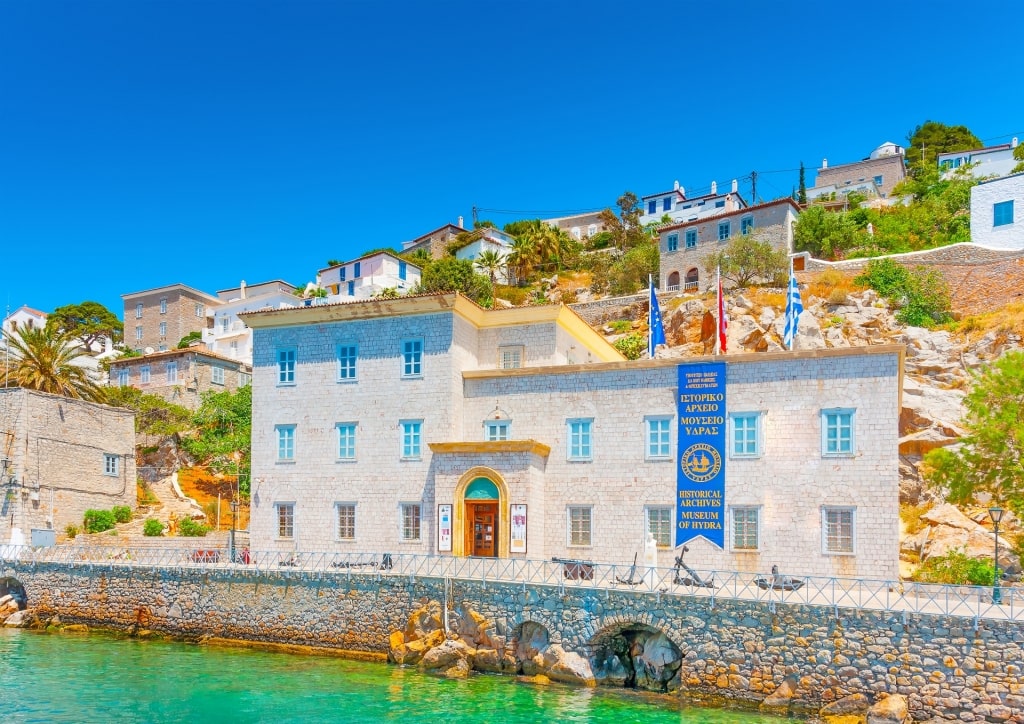
Historical Archives Museum of Hydra
The latter is home to the remains of the revolutionary Andreas Vokos Miaoulis and there’s a fine statue of him on the portside.
Leonard Cohen fans could make their way up through the back streets to the late singer’s home; Cohen lived on Hydra during the 1960s, and was part of the island’s then-famous bohemian community.
Afternoon
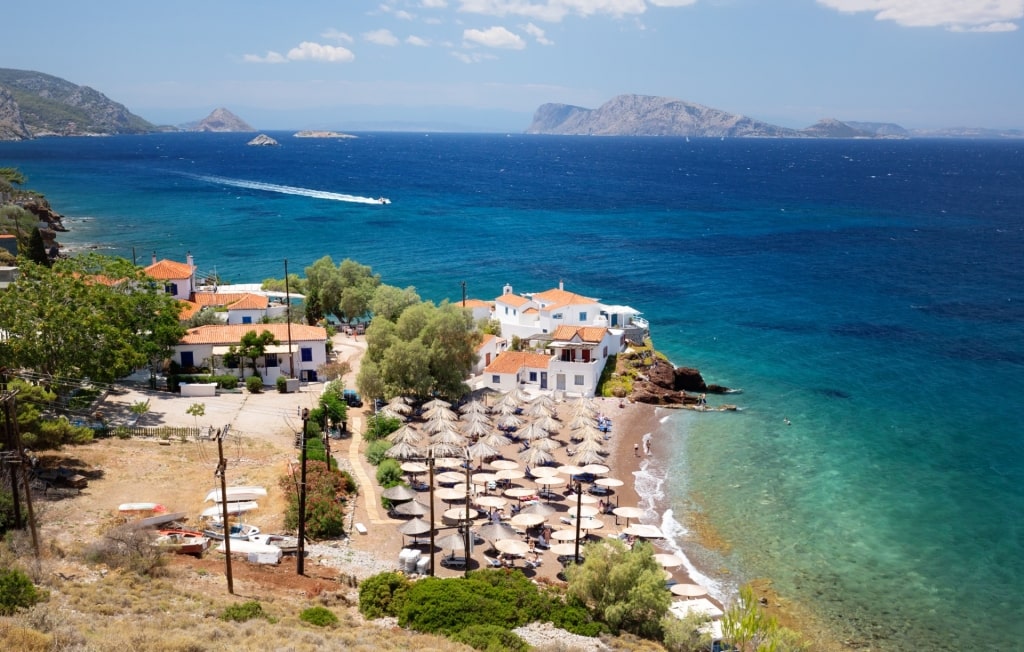
Vlychos Beach, Hydra
Walk around the curve of the port and pick a taverna or fish restaurant for a lazy lunch You could while away the afternoon here, or, if time and energy allows, jump in a water taxi or take the 30-minute walk from town to Vlychos Beach.
This small stretch of fine sand lies on a gently shelving beach with umbrellas and sun loungers, as well as showers to rinse off at the end of the day.
Read: Expert Tips for Planning a Trip to Greece
Embark on your own Greek odyssey with Celebrity Cruises. Browse our cruises to Greece and find your dream voyage.




